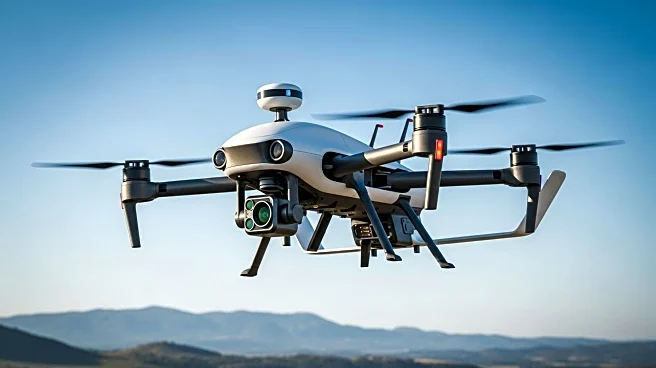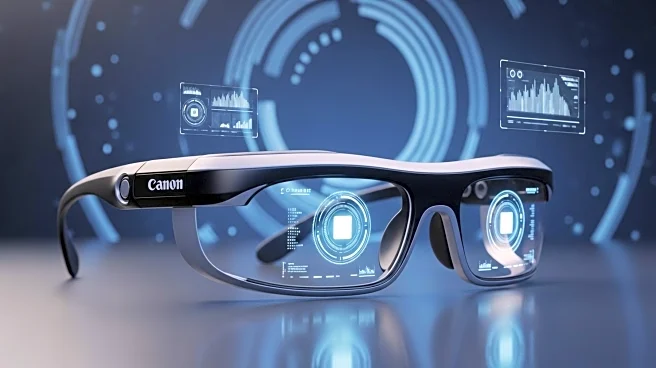What's Happening?
Anduril Industries has officially unveiled its EagleEye helmet on October 13, 2025, marking a significant development in augmented reality (AR) technology for military applications. The EagleEye helmet integrates AI into a soldier's field of view, enhancing
decision-making capabilities on the battlefield. This announcement follows Anduril's recent $159 million prototype award for soldier mixed reality systems, indicating a shift towards faster procurement cycles in defense technology. Additionally, Apple has leaked information about its upcoming smart glasses, which may feature dual user interfaces catering to both consumer and professional workflows. This development could influence app design and developer priorities, allowing Apple to target a broader range of users.
Why It's Important?
The introduction of Anduril's EagleEye helmet represents a pivotal moment in military technology, potentially transforming how soldiers interact with their environment and make decisions. By integrating AI into wearable technology, the military could see enhanced operational efficiency and improved situational awareness. This advancement may also set new standards for consumer tech, as military innovations often trickle down into civilian applications. Apple's rumored dual-UI smart glasses could further diversify the AR market, offering tailored experiences for different user groups. These developments highlight the growing importance of AR technology in both defense and consumer sectors, with implications for privacy, app design, and market dynamics.
What's Next?
As Anduril continues to develop its EagleEye helmet, the defense sector may experience accelerated adoption of AR technologies, potentially influencing procurement strategies and military training programs. Apple's dual-UI smart glasses could lead to a split in app development priorities, prompting developers to create distinct experiences for consumer and professional users. The broader AR industry may see increased investment and innovation, as companies race to capture market share in this evolving field. Stakeholders, including tech companies, military organizations, and regulatory bodies, will likely monitor these developments closely to assess their impact on technology standards and user privacy.
Beyond the Headlines
The integration of AR technology into military applications raises ethical and legal questions about the use of AI in combat scenarios. As AR systems become more prevalent, issues related to data privacy, user consent, and the potential for misuse will need to be addressed. Additionally, the expansion of AR into consumer markets could lead to shifts in cultural norms, as wearable technology becomes more integrated into daily life. These developments may also influence global supply chains, as companies invest in R&D to stay competitive in the AR space.













